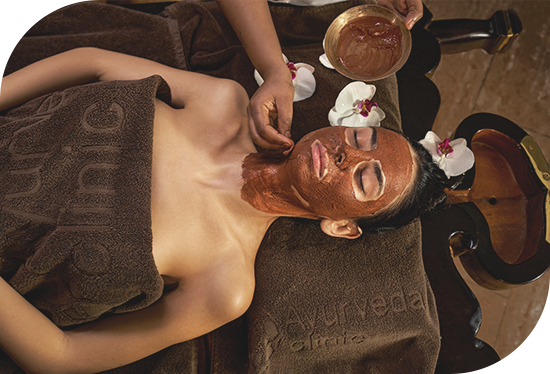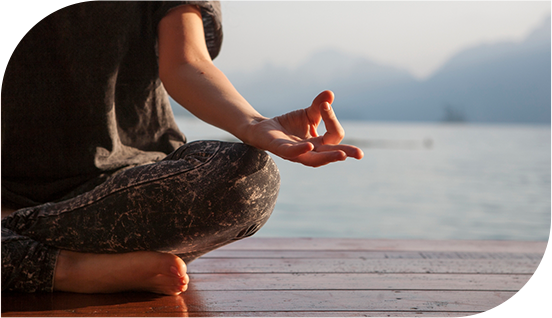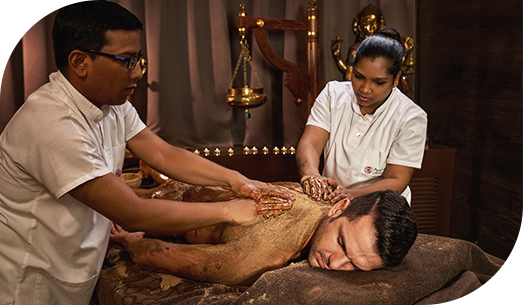What is Ayurveda?
Ayurveda – the ancient science of health, coming from the East
Many people turn to it for the prevention of general health, and others – for the treatment of diseases.
The reason for the emergence of Ayurveda more than five millennia ago is simple – the desire of every human being for a long life in pursuit of goals.

Ayurveda and Purusharti (puruṣārthas)
Dharma
Artha
Kama
Moksha
History of the origin and development of Ayurveda
The mythological account refers the origin of the doctrine to the god Brahma.
The sages in India were afflicted with disease and premature death, although they lived in the Himalayas.
This led them to seek help from the god Indra, also called the King of the gods.
- Indra turned to the god Brahma for help.
- Brahma passed on the knowledge of Ayurveda to the god Prajapathi, who is responsible for protecting people.
- Prajapathi for his part, passed on the knowledge to the healers of the gods, the Kumaras twins.
- The healers sent him to the god Indra.
- And Indra – to the sage Atreus, leader of the Himalayan sages.
- Atreus passed it on to Agnivesa, who in turn passed it on to the other sages …

During the centuries of Ayurveda, many sages recorded their own theories in sutras with interpretations of the original texts.
In Ayurvedic literature, the mornings are united and form the basic concept of Eastern science and Ayurvedic philosophy.
The main deity in Ayurveda and its eight branches
He received the knowledge from the god Indra and passed it on to the sage Sushruta, dividing Ayurveda into eight branches (Ashtanga Ayurveda):
1. Kaya Chikitsa
2. Bala Chiktsa
3. Graha Chikitsa
4. Urdhvanga Chikitsa
5. Shalya Chikitsa
6. Damshrta Chikitsa
7. Jara Chikitsa
8. Vrushya Chikitsa
According to ancient Hindu teachings, the existence of every human being has one main purpose. This Moksha – complete freedom from the limitations of earthly life.
Ayurveda serves to achieve the highest goal through prevention and treatment.
The axioms of Ayurveda
They are based on:
- The doctrine of Panchamahabuta, or the Five Elements;
- The doctrine of the three doshas: Vata, Pitta, Kapha.


- Space (Akash) – connects to free, empty space;
- Air (Vayu) – it is associated with the characteristics of movement and activity;
- Fire (Tejas) – its main characteristic is the transformation from one form to another;
- Water (Jala) – it is determined by qualities such as connectivity, humidity, liquid nature, penetration and softness;
- Earth (Prithvi) – its leading qualities are solidity, density and shape formation.
The idea of creating the human body according to Ayurveda
Vata (space and air)
Pitta (fire and water)
Kapha (water and earth)
They can be manifested to varying degrees, but they must be available and coded for the rest of a person’s life.
Ayurveda explains all aspects of health, as well as the causes of diseases, using the teachings of the five elements and the three doshas.
What do the terms health and disease mean according to Ayurveda?
When one, two or all the energies are out of balance, Ayurveda defines this condition as a disease.
In the presence of disease symptoms, it is desirable to visit an Ayurvedic doctor to determine the energy imbalance.
For this purpose, there are used methods such as:

Rogi Pariksha
- Darshana – the doctor observes the patient, recording his age, body structure and appearance;
- Sparshana – the doctor palpates, listens, and examines the patient by touch;
- Prashna – the doctor asks targeted questions to determine the patient’s symptoms.
Dasavidha Pariksha
- Dooshyam – structural and physiological disorders of the body;
- Balam – physical force;
- Analam – condition of the digestive system;
- Prakriti – dominant dosha;
- Vayas – age of the patient;
- Satvam – mental endurance;
- Sathmyam – the patient’s lifestyle: habits and rules to follow;
- Aharam – type and quality of the food he/she consumes;
- Desham – climatic features of the place where the patient lives;
- Kalam – seasonal and climate change.
Ashtavidha Pariksa
- Nadi – pulse diagnostics;
- Moothram – urine test;
- Malam – faecal test;
- Jihwa – tongue review – shape, color, presence / absence of deposits;
- Sabdam – volume of the voice and features of the patient’s speech;
- Sparsham – skin / tactile sensitivity;
- Drik – eyes and vision;
- Akrithi – body shape.

Result of the examination
- Intake of water and fluids;
- Diet and physical activity;
- Intake of Ayurvedic herbal products;
- Recommended lifestyle changes.
The Ayurvedic doctor also recommends recipes related to the intake of various Ayurvedic herbal products.
Ayurvedic herbal products
The most famous are the two systems Purvakarma and Panchakarma.
Purvakarma
Purvakarma is used in two varieties:
- Snehana – body oiling;
- Svedana – body sweating.
Snehana, on the other hand, is subdivided into two types:
- Bahya – external oiling of the body with various healing herbal oils;
- And Abhyantar – internal oiling of the body by drinking, gnawing or placing in the nose or ears of herbal oil or Ghee.
Panchakarma
- Vamana – induced vomiting, which balances Kapha’s energy and expels toxins from the upper body.
- Virecana – induced laxative effect that balances Pitta energy and expels toxins from the digestive system.
- Vasti – healing enema therapy that balances Vata energy, removes accumulated toxins and improves colon function.
- Nasya or Sirovirecana – application of healing oil in the nose to clear toxins from the scalp.
- Raktamoksana – methods of bloodletting.
After the end of the effect with Panchakarma, associated with the application in a certain sequence of different therapies, a lifestyle called Pascatakarma is prescribed, and a special diet -Samsarjana-Krama.
Ayurveda in the modern world
It is difficult for modern man, whose health culture is based on classical medical theory, to understand the effect of these methods, as well as their effect on all levels of the human being – from the roughest to the finest.
At Ayurveda Clinic Bansko you can learn about the power of Ayurveda with the help of qualified Indian doctors, authentic Ayurvedic therapies and local Indian herbs, supplied specifically for the purposes of our programs.


